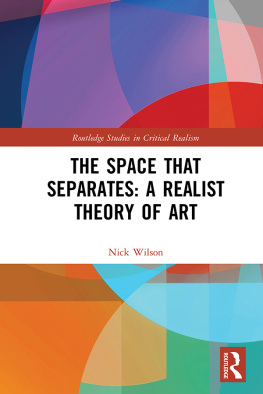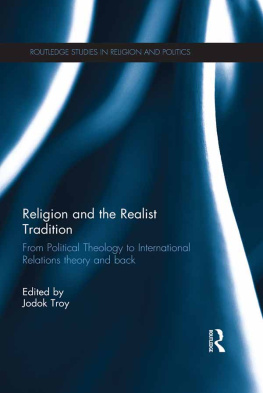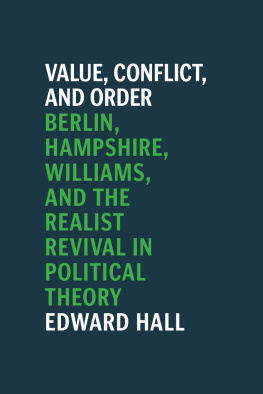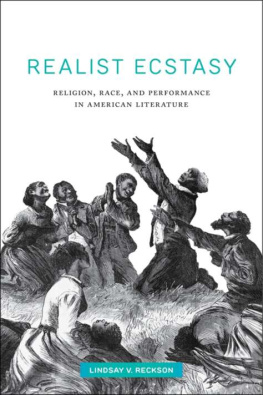The Space that Separates: A Realist Theory of Art
The Space that Separates: A Realist Theory of Art radically challenges our assumptions about what art is, what art does, who is doing it, and why it matters. Rejecting the modernist and market-driven misconception that art is only what artists do, Wilson instead presents a realist case for living artfully. Art is defined as the skilled practice of giving shareable form to our experiences of being-in-relation with the natural necessity of the world; that is to say, the causally generative domain of the real that extends beyond our direct observation, comprising relations, structures, mechanisms, possibilities, powers, processes, systems, forces, values, ways of being. Through communicating such aesthetic experience we behold lifes betweenness the space that separates, so coming to know ourselves as connected.
Providing the first dedicated and comprehensive account of art and aesthetics from a critical realist perspective Aesthetic Critical Realism (ACR), Wilson argues for a profound paradigm shift in how we understand and care for culture in terms of our system(s) of value recognition. Fortunately, we have just the right tool to help us achieve this transformation and its called art. Offering novel explanatory accounts of art, aesthetic experience, value, play, culture, creativity, artistic truth and beauty, this book will appeal to a wide audience of students and scholars of art, aesthetics, human development, philosophy and critical realism, as well as cultural practitioners and policy-makers.
Nick Wilson is Professor of Culture & Creativity at the Department of Culture, Media and Creative Industries (CMCI), Kings College London. Nick worked as a professional singer, and then in arts management, before joining the Small Business Research Centre, Kingston University, in 2000, and Kings College London in 2009. His current research embraces aesthetic critical realism, art and cultural development, creativity and cultural opportunities, cultural entrepreneurship, and the historical performance of music.
Routledge Studies in Critical Realism
Critical Realism is a broad movement within philosophy and social science. It is a movement that began in British philosophy and sociology following the founding work of Roy Bhaskar, Margaret Archer and others. Critical Realism emerged from the desire to realise an adequate realist philosophy of science, social science, and of critique. Against empiricism, positivism and various idealisms (interpretivism, radical social constructionism), Critical Realism argues for the necessity of ontology. The pursuit of ontology is the attempt to understand and say something about the things themselves and not simply about our beliefs, experiences, or our current knowledge and understanding of those things. Critical Realism also argues against the implicit ontology of the empiricists and idealists of events and regularities, reducing reality to thought, language, belief, custom, or experience. Instead Critical Realism advocates a structural realist and causal powers approach to natural and social ontology, with a focus upon social relations and process of social transformation.
Important movements within Critical Realism include the morphogenetic approach developed by Margaret Archer; Critical Realist economics developed by Tony Lawson; as well as dialectical Critical Realism (embracing being, becoming and absence) and the philosophy of metaReality (emphasising priority of the non-dual) developed by Roy Bhaskar.
For over thirty years, Routledge has been closely associated with Critical Realism and, in particular, the work of Roy Bhaskar, publishing well over fifty works in, or informed by, Critical Realism (in series including Critical Realism: Interventions; Ontological Explorations; New Studies in Critical Realism and Education). These have all now been brought together under one series dedicated to Critical Realism.
The Centre for Critical Realism is the advisory editorial board for the series. If you would like to know more about the Centre for Critical Realism, or to submit a book proposal, please visit www.centreforcriticalrealism.com.
Social and Ethnic Inequalities in the Cypriot Education System
A Critical Realist View on Empowerment
Areti Stylianou and David Scott
The Space that Separates: A Realist Theory of Art
Nick Wilson
For more information about this series, please visit: www.routledge.com/Routledge-Studies-in-Critical-Realism-Routledge-Critical-Realism/book-series/SE0518
First published 2020
by Routledge
2 Park Square, Milton Park, Abingdon, Oxon OX14 4RN
and by Routledge
52 Vanderbilt Avenue, New York, NY 10017
Routledge is an imprint of the Taylor & Francis Group, an informa business
2020 Nick Wilson
The right of Nick Wilson to be identified as author of this work has been asserted by him in accordance with sections 77 and 78 of the Copyright, Designs and Patents Act 1988.
All rights reserved. No part of this book may be reprinted or reproduced or utilised in any form or by any electronic, mechanical, or other means, now known or hereafter invented, including photocopying and recording, or in any information storage or retrieval system, without permission in writing from the publishers.
Trademark notice: Product or corporate names may be trademarks or registered trademarks, and are used only for identification and explanation without intent to infringe.
British Library Cataloguing-in-Publication Data
A catalogue record for this book is available from the British Library
Library of Congress Cataloging-in-Publication Data
A catalog record has been requested for this book
ISBN: 978-1-138-91208-3 (hbk)
ISBN: 978-1-315-69212-8 (ebk)
Especially for my mother, Jane.
To be alive is to be-tween. Life, for human beings, is everything between conception and death. We are, all of us, between being and becoming, self and other, potential and actual, known and unknown. Welcome to The Space that Separates. Coming to terms with this betweenness is a universal and on-going need. Indeed, it constitutes one of our deepest most ultimate concerns. The central argument of this book is that we have at our disposal many tools (practical, social, performative, scientific, philosophical, spiritual) that help us live in The Space that Separates; but it is through art that we come closest to fulfilling this need. For in doing art we both make connections, and come to know ourselves as connected. We give shareable form to our experiences of being-in-relation with the natural necessity of the world; that is to say, with the causally generative domain of the real that extends beyond our direct observation, comprising relations, structures, mechanisms, possibilities, powers, processes, systems, forces, values, ways of being. We do this in many ways, and by no means always resulting in the creation of recognised artworks. In practicing art, we open ourselves to the worlds openness, whether experienced as wholeness, emergence, excess or lack; this is creativity, care, and deep connection. As such, the value of art far exceeds interest in artists, artworks, or the arts. Indeed, the capacity for living artfully, as outlined in this book, is nothing less than a pre-requisite of human development and collective flourishing.
Making the case for art swims against the tide. Research tells us that many people dont have any interest in the arts; many others are denied the opportunity to find out. In their recent strategy consultation exercise Shaping the Next Ten Years, Arts Council England explicitly omit references to art, the arts or artists (preferring instead to talk in terms of culture, creativity and creative practitioners), citing the general publics narrower understanding of these terms as grounds for their decision. It should come as no surprise, therefore, that an increasing number of cultural theorists appear to write off art as irrelevant, judging it as an elitist and outmoded preserve of the well-off. To some extent at least, this








